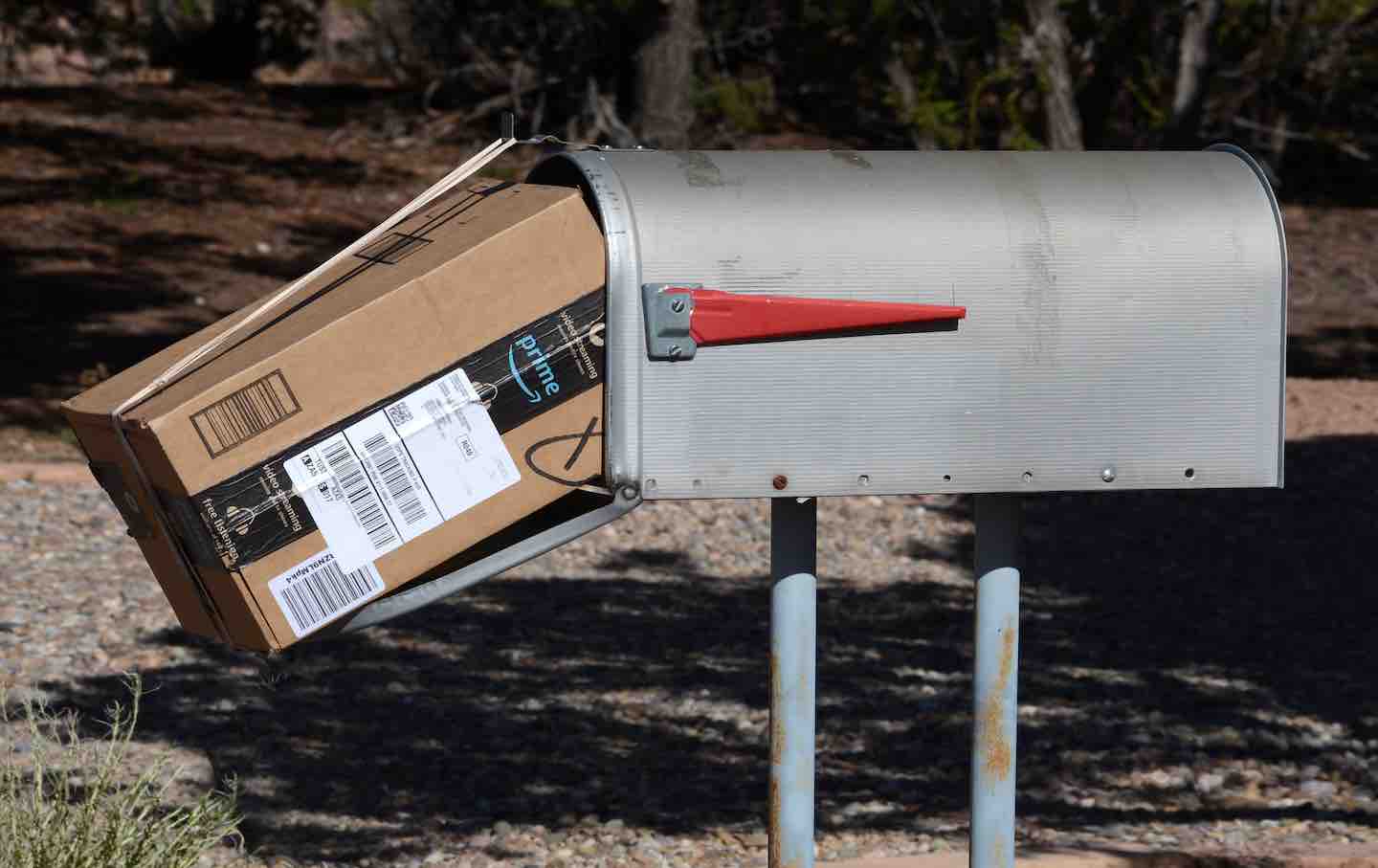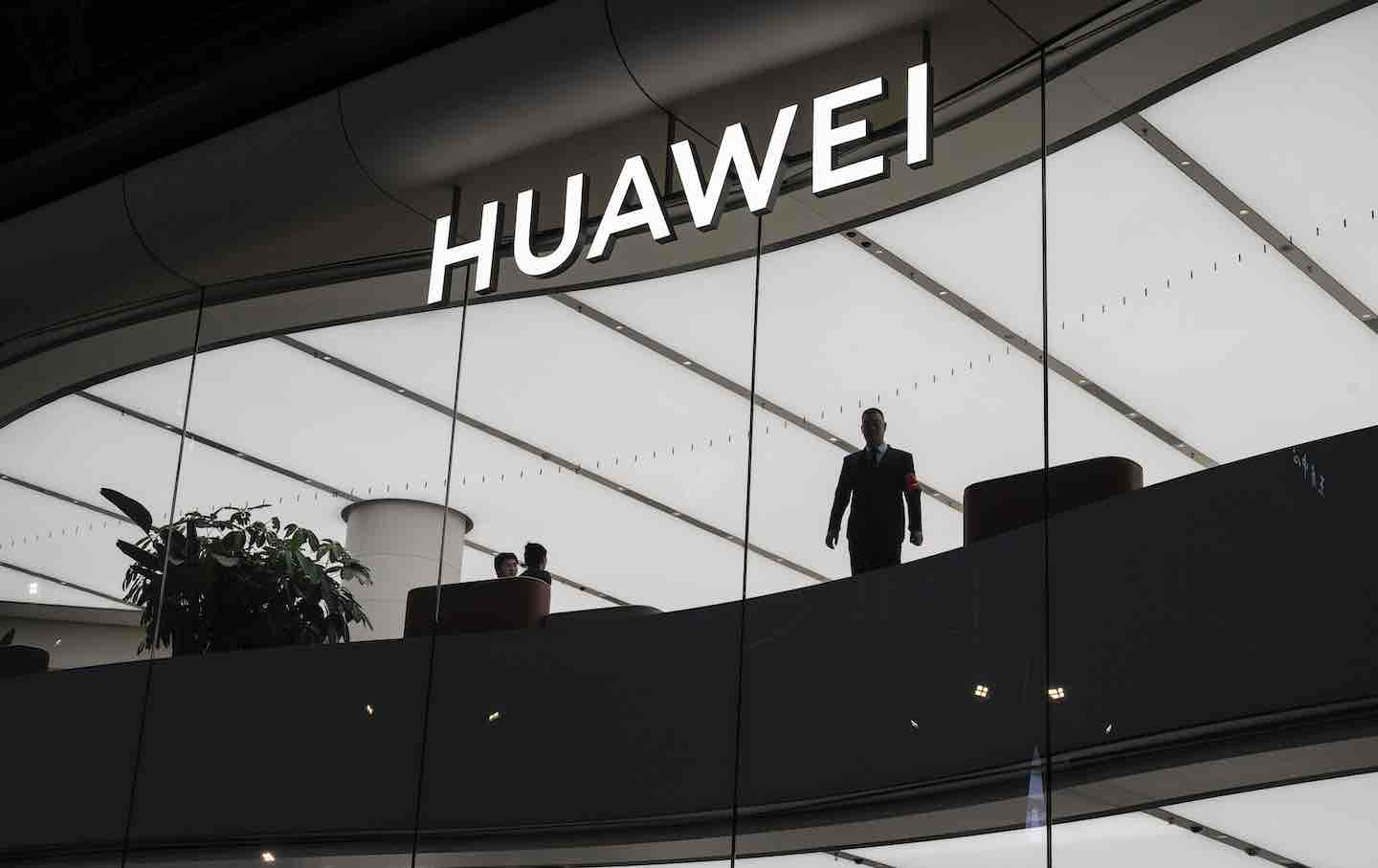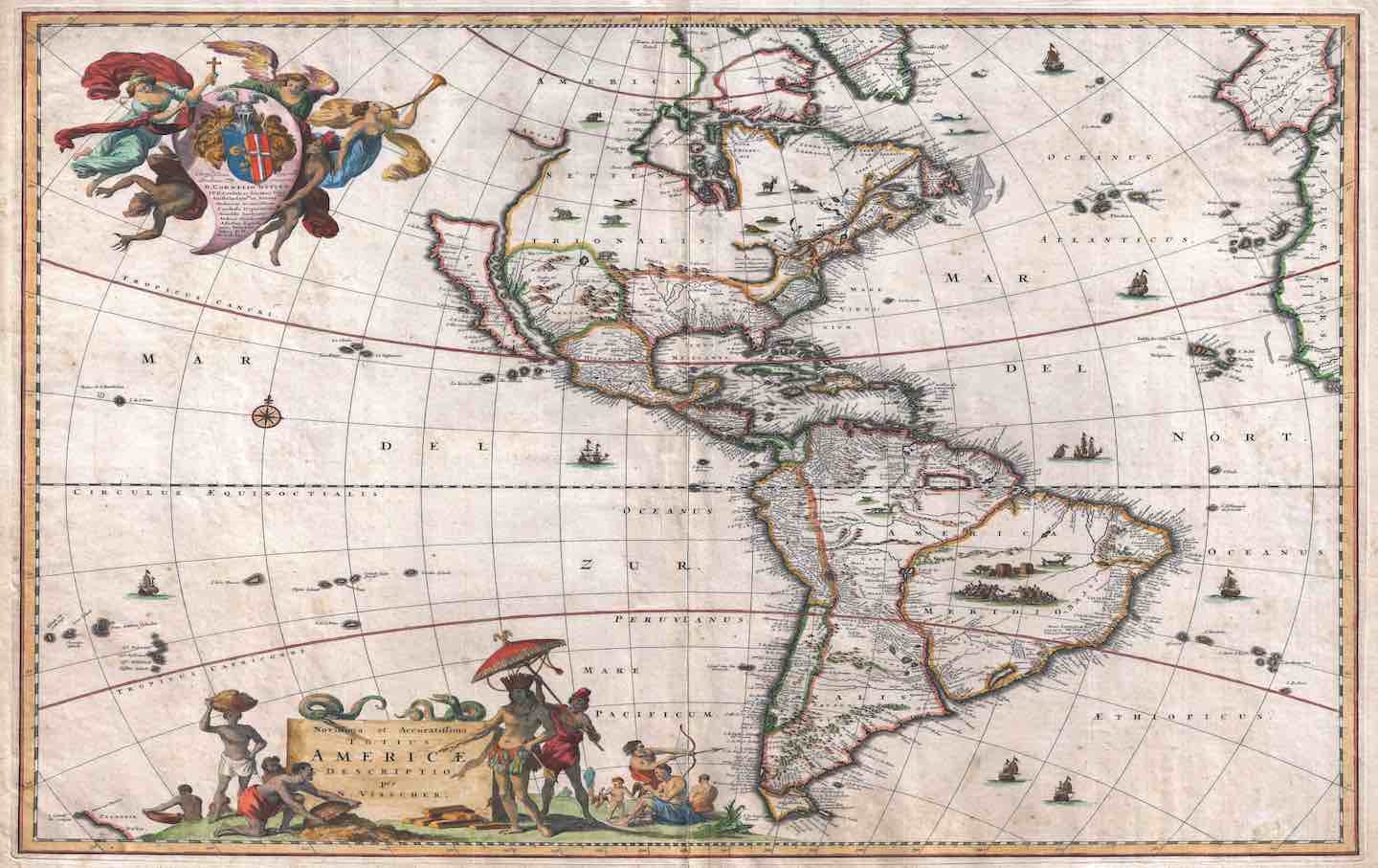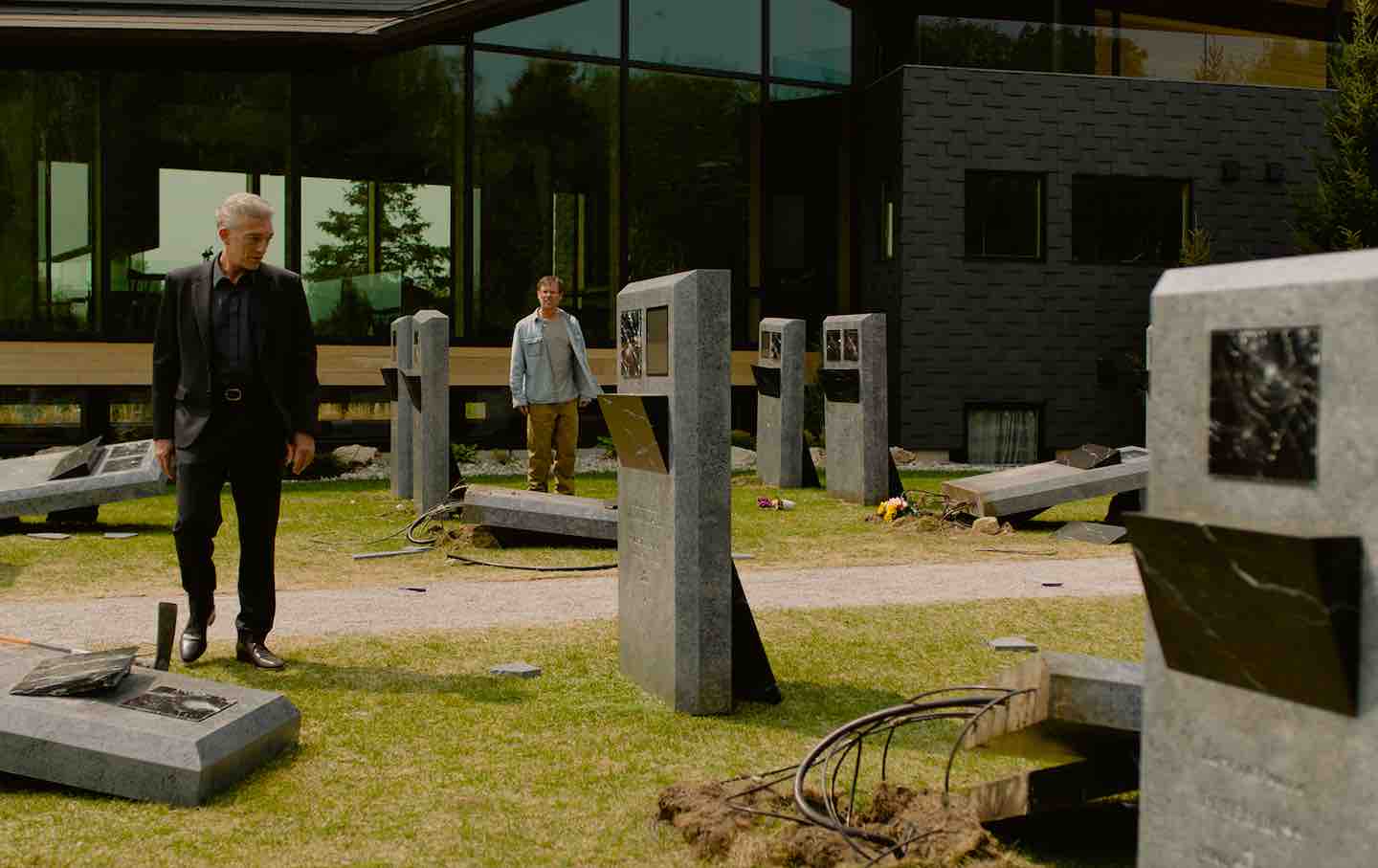Transatlantic Tragedy: Grenfell Moves from Britain’s National Theatre to a Brooklyn Stage
Transatlantic Tragedy: “Grenfell” Moves from Britain’s National Theatre to a Brooklyn Stage
An interview with Gillian Slovo, whose new play about the survivors of the Grenfell Tower fire in London just opened in New York.
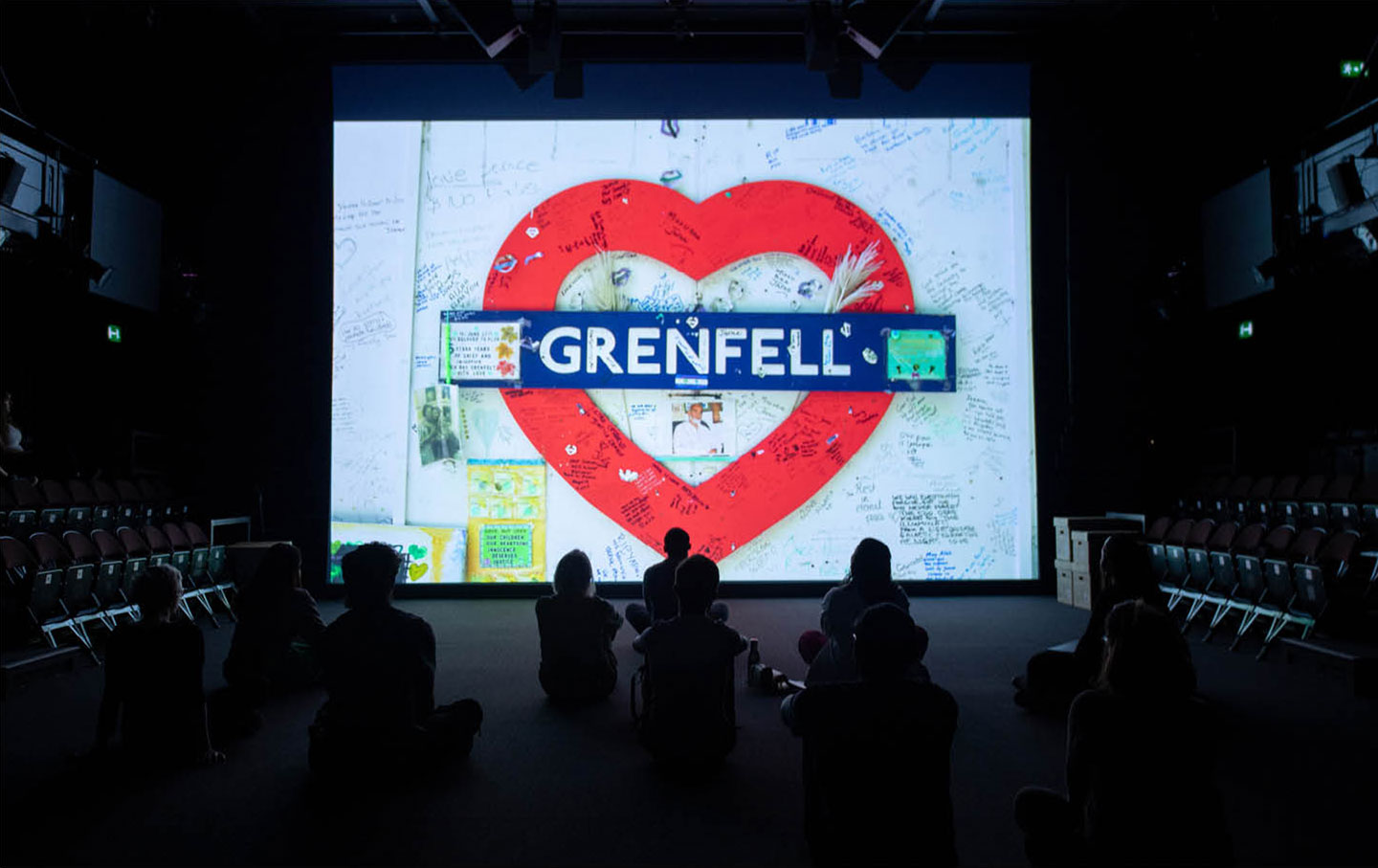
When her play Grenfell: In the Words of Survivors opened at Britain’s National Theatre last July, Gillian Slovo worried less about the critics than about her toughest audience: the relatives of those who’d been killed in London’s worst residential fire since the German bombing campaign in World War II. The 2017 inferno, in a public-housing high-rise in one of the richest neighborhoods in the world, took 72 lives and left hundreds injured and homeless. As it turned out, when the play debuted, the critics were ecstatic: The Guardian called Grenfell “a masterpiece of forensic fury”; Time Out urged readers to see this “tour de force.” And luckily, the survivors whose words make up this verbatim drama seemed grateful to have their testimony amplified. Now, with the play opening this month at St. Ann’s Warehouse in Brooklyn, the question is how an American audience will respond. I sat down with Slovo in London recently to consider the matter.
What is Grenfell, and why did you decide to write a play about it?
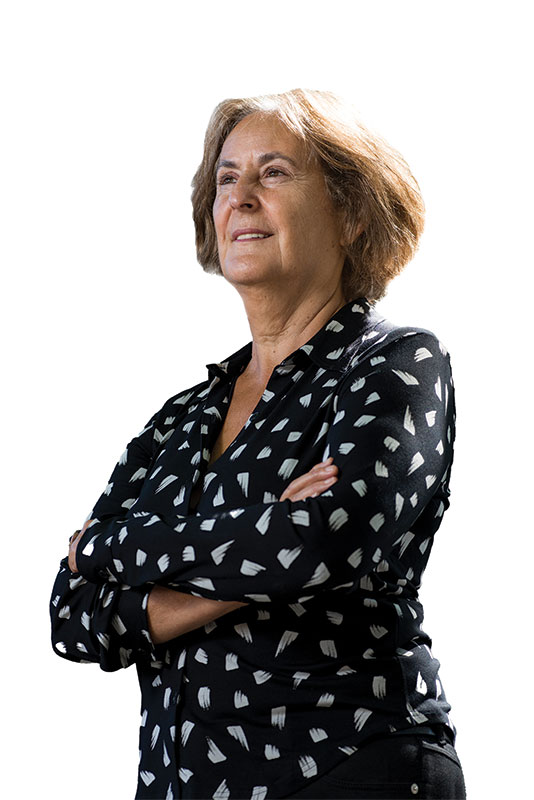
On the 14th of June, 2017, at [a high-rise public-housing project in West London called] Grenfell Tower, there was a fire in one of the apartments. The resident phoned the fire brigade and got the people in his flat and everybody else on his floor out. And the fire brigade was there pretty fast. But because of the cladding on the building and the way the building had been refurbished, the fire caught on the outside of the building, and almost within 30 minutes, one side of the whole of the tower was alight—24 stories.
And then, because of decorative material on top of the building, the fire crossed over and went down the other side. So within a very short period of time, the whole tower was ablaze. The fire brigade didn’t know—couldn’t believe—what was happening. And instead of getting people out, they abided by the rule that is normally applied here, which is [to tell people to] stay put. The fire brigade stuck with “Stay put” for a very long time. People in the upper floors were ringing the fire brigade and saying, “I smell smoke—my smoke alarm’s going off. I hear there’s a fire here.” And the operators, who were sticking to the fire brigade’s standard advice, said, “Oh, it’s on the fourth floor. Don’t worry about it.” So people didn’t get out. By the next day, 71 people had died, and then one of the people who did get out died as a result of the fire later, so that made 72.
Why was Grenfell a huge social disaster, as well as a personal tragedy for the people involved?
Because we have been brought up to believe that we’re in a society that is very well-regulated for our health and safety, that we live in a democracy which is careful of people’s lives. And it was almost inconceivable that a building like that could catch fire in that way and that so many people could die so quickly. I think it was an indication of a complete systemic failure—not just of the building regulations, but also of the way government reacted. This was a building that was owned by Kensington and Chelsea [the council, or local government, of one of the richest boroughs in the richest city in Britain].
And in the aftermath of the fire, the council panicked. I talked to a senior police officer who was in charge of the first response to the fire, and she said they couldn’t get a list from the council of who had actually lived in the building, so they didn’t know who had survived and who had died. They went to all the local shops and restaurants and looked at their Uber deliveries. That’s one of the ways they knew who had been in the flats, because the council seemed unable to know who had lived in the building, and also how to respond to the fact that this building caught fire. There were many survivors who had nowhere to go and were totally shocked, and there were many dead, and nobody knew how many. The immediate community and then the rest of the country responded in a way that government—both local and national—failed to respond. People flooded into the area volunteering, providing water, clothing… In fact, there was so much clothing and water and food that in the end they had to give a lot of it away to charity.
At the time, it seemed that one of the reasons government was not terribly assiduous in learning who had died or looking after the survivors was because of the kinds of people who lived in Grenfell.
“The kinds of people”—well, it’s a hard thing to say, because one of the things that the people of Grenfell feel very strongly about is that, in the immediate aftermath, the red tops [tabloid newspapers] started reporting the people in the fire as council tenants who were poor, who were on benefits, or who were asylum seekers. It actually wasn’t true of Grenfell. You had to be below a certain income to get council housing, but many people in the tower worked. It was quite a functional community. One indication of how functional it was is how the tower residents responded to the fire. They were the ones who spearheaded efforts to work out who died; they were the ones who went to the community centers and started making lists of who was there and who people had seen and have campaigned ever since to try to stop this [from] ever happening again. And that community has proved to be unbelievably capable compared to the authorities who were supposed to look after them. And then the story came out that the community had expressed concerns about fire safety in the building during the refurbishment that was completed in 2016, which is when a fireproof concrete building was turned into a fire hazard by the addition of cladding and through shoddy work. They tried to get the council to address their safety concerns, which included a lack of emergency lighting and fire exits, and the council just ignored them. So in a way, it became also a story about the way that the state just takes no notice of ordinary people.
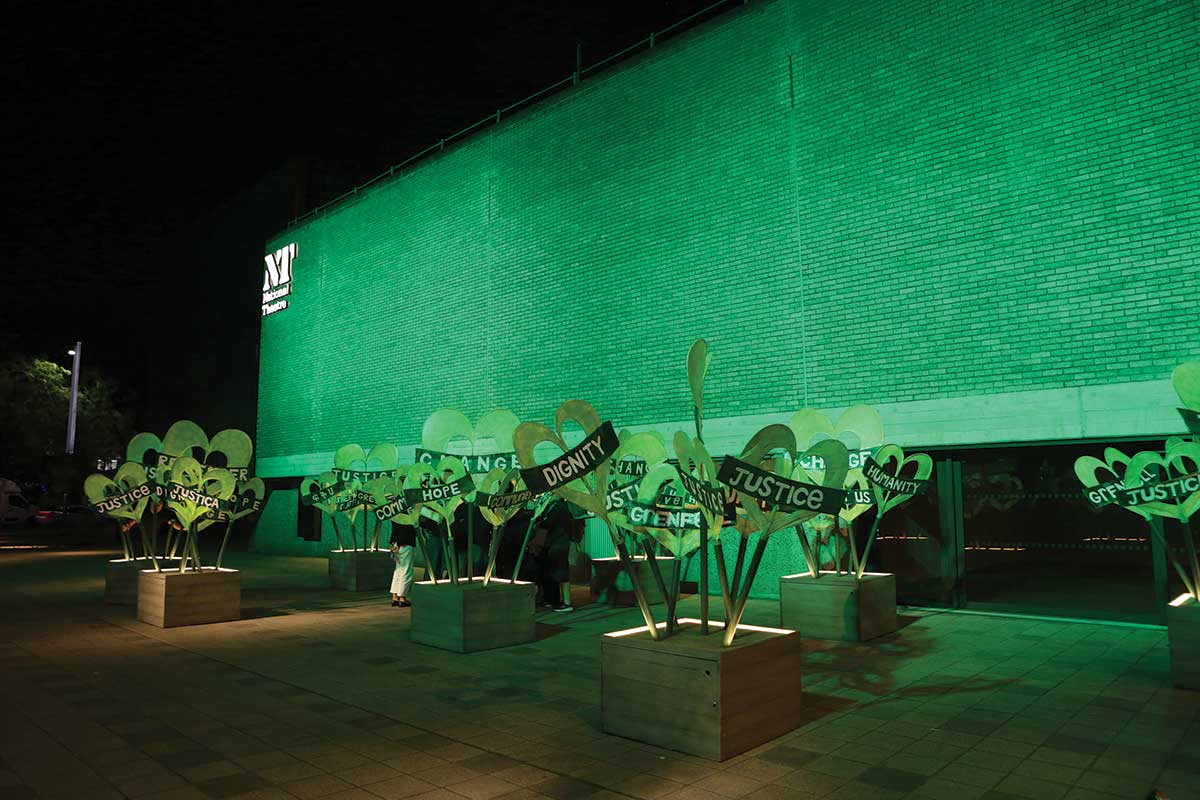
You began as a writer of detective novels. But then you started addressing—and this is roughly the point at which we met—the material that, in a sense, came from your life as someone who’d grown up in South Africa, or partly in South Africa, as the daughter of African National Congress activists Ruth First and Joe Slovo.
Part of the reason that I chose [detective novels] when I started to write was not only because that’s what I liked to read, but also because my childhood had been spent trying to work out what was going on, which is what a detective has to do, in the face of people who didn’t want to tell you. And because of my parents’ political activity in South Africa, almost everything that they were doing was illegal. They used to discuss things by getting up from the dinner table and going to the garden and talking about something and coming back. But because of their political activity, they were taken to jail at various points, and there was an air of tension around my whole childhood, which meant that to keep myself safe, I was always eavesdropping. I was that detective.
My detective novels were set in London, which is where I lived. But when I stopped writing detectives, I started writing books set in South Africa, which is the country I come from and which I hadn’t at that time been able to go back to. And I explored some of the history of the struggle in South Africa through a novel called Ties of Blood, which came out just before Nelson Mandela was released from prison [in 1990], and the organization for which my father worked—he was chief of staff of [uMkhonto we Sizwe, the military arm of the] ANC—was unbanned. When my book first came out, it was banned in South Africa, and then it was unbanned, and I could finally go back.
So I started writing a bit more about South Africa, and then after the first democratic election in South Africa in 1994, I went back there to write a family memoir [Every Secret Thing].
When I came to England [in 1964], I really didn’t want to know anything about South Africa. It had caused me too much pain, and I wanted to be English. And then in 1982, my mother was killed by a letter bomb the South African police had sent to her, and it showed me how stupid it was to think that I could avoid South Africa. Because of what my parents had chosen to do and because of what South Africa was, there was no getting away from it. That’s why I started writing about South Africa. But I had to write these stories in fiction until 1994, and then [I was] able to ask the kind of questions about what had happened that had intersected with my past in a way that people might answer. So that’s when I wrote my family memoir.
How did you get into writing drama?
I wrote a novel called Ice Road, set in what was then Leningrad during the siege [in World War II]. Afterwards, I made a radio program where I interviewed people who had lived through the siege of Leningrad—women. And then Nick Kent, who ran the Tricycle Theatre in London, was putting on some kind of play set in Soviet times and asked if he could use some of the material. Nick Kent made his name not only by running the Tricycle, but also by doing verbatim plays. They were very effective.
Nick wanted to do something on Guantánamo, and there was no inquiry at that point. So he asked me if I would work with him interviewing British families of people who were detained in Guantánamo and constructing a verbatim play. I had never done anything like that. I asked him, “What happens if I can’t do it?” And he said, “Well, it just won’t be very good then, will it?”
I believe that is what you should be allowed in art: You should be given permission to be ambitious and know that sometimes you may not succeed. So I started, and I discovered I really liked doing it. I never thought of myself as somebody who particularly liked interviewing people, but I’m nosy, and I spent my childhood trying to find out things, and so I’m interested in finding out who people are and what they are. And for me, Guantánamo was particularly interesting, because I read the newspapers quite assiduously and thought I knew everything, and what I discovered is, I didn’t. And it was really interesting being on a project trying to figure out: What on earth is going on here?
And also, working with actors was so incredibly interesting, because actors have an ability to use words and make them live—and make the people who are speaking them live. And it is extraordinary—particularly with Grenfell, because they’ve been able to meet the people—how committed they are to getting it right, to being able to enact onstage what people are like without turning them into stereotypes. I think it reveals the power of what those plays can do.
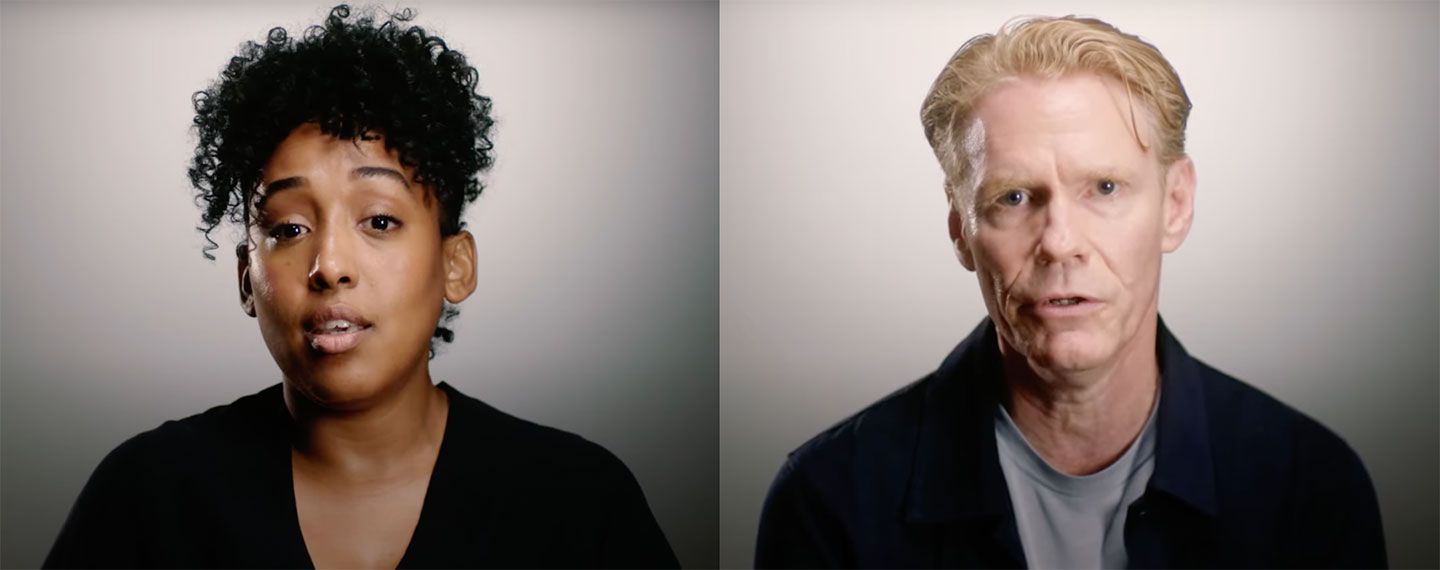
So take us from Guantánamo to Grenfell. What was the next play?
The next play was The Riots. In 2011, a Black man was killed by the police in London, and the police did not act well in response to the demonstrations protesting it, and it turned into a riot in Tottenham, where this had happened—but it spread. And so, for about a week, England was in flames.
The state was incredibly punitive. Somebody got six months in prison for stealing some water. They really wanted to make an example of the people involved. The play I wrote was about what had happened at the original demonstration, and it was an examination of how what had started as a protest turned into a countrywide riot.
And after that, I did a play on the Islamic State. The question that I set myself there was: How do kids from our world go and join the Islamic State? I couldn’t get any people in England to talk—partly because the law had become so punitive that if you had any knowledge that anybody was going to the Islamic State, you too could be imprisoned. People found it very hard to trust anybody interviewing them. That play, the strength of it, the core of it, was three women whom we found in Belgium who had formed part of a community of women who had lost their kids to the Islamic State and were supporting each other.
And I think the dignity and the courage of those women carried [the play], because the thought that your child would go and join the Islamic State—not only join it, but most likely get killed there—is so unbearable. And yet these women talked with such dignity and honesty about not understanding how their kids got there, but also what it had done to them, that I think it really made the play live.
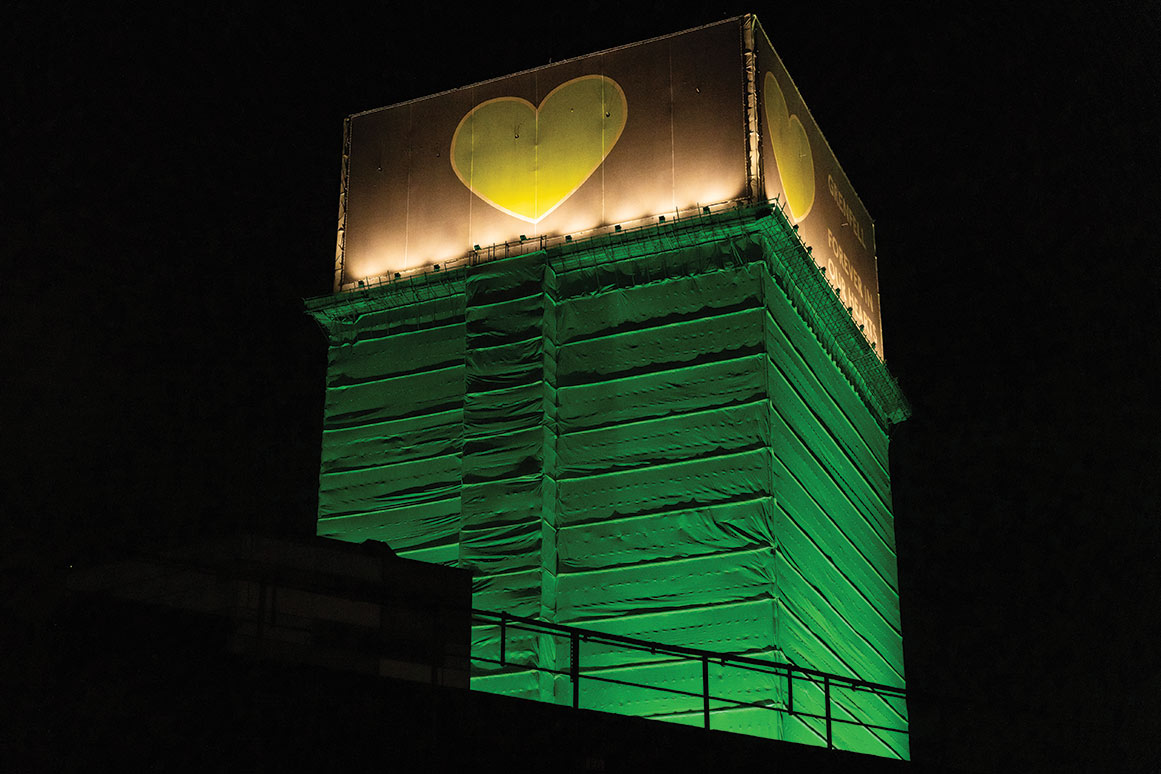
It also gave a British audience an entry point.
The question for me is: Why would people from our world go there? And some of the answer is because of the nature of our world. Some of the answer came through Islamic State propaganda, which we thought of as all about cutting people’s heads off, but these kids did not receive that on their computers. They got beautiful, lyrical adverts for a different way of being where all the men were bearded and handsome, and rode on horses, and were having a great time. And this was a rejection of commercialism and consumerism that I think spoke to disenfranchised kids here. I mean, it was a lie, but once you look at it—
The promise was a lie, but the criticism wasn’t a lie.
The criticism was based on reality: “If you’re gonna live here, you’re gonna be poor, undereducated, and you’ll never get anything from the society. Come and build the new world. You will matter where we are.” Unfortunately, “you will matter” probably meant “if you’re a man, you will matter.” But they still managed to attract young women, who felt that they could belong in a way they didn’t belong here.
About not belonging here, this may or may not carry over to Grenfell, but how much of that is about assimilation?
And whether you can become English if you’re brown or Black. Despite the fact that this country has fundamentally changed since I came here, in the ’60s, and is a much more diverse country than it was then, there’s still a ruling class that has control over the whole of this society. And I think if you’re new or second-generation, it’s quite hard to feel that you really are part of this society. It took me a very long time to integrate, and I’m an English speaker and I’m white. It’s a difficult, difficult society to penetrate, this one.
But funnily enough, I don’t think the people of Grenfell felt like that. They felt that they belonged.
How does community form inside a tower block?
One of the ways it forms is that the lifts didn’t work very well. So people spent a lot of time waiting for lifts, and they got to know each other.
Popular
“swipe left below to view more authors”Swipe →There were a lot of people of color who died in that fire, because they were on the top floors. The top few floors lost most of the people, because [they] just could not get out of the tower by the time the fire brigade realized they should leave—which was too late. In the high flats—which [were] not desirable because if the lifts failed, you had to walk all the way up, and the lifts were always failing—it’s the worst-off people in the society who are going to take those, because they’re more desperate. And there were quite a lot of people who shouldn’t have been in those top floors because they had mobility issues, but they took it because they needed [housing].
Say a bit more about what kind of flats they were.
When they were built, there was something called the Parker Morris standards in Britain, which meant that people in public housing should have a certain standard of space and light. Everybody talked about how beautiful their flats were and, of course, because it was high, how wonderful the views were. Many of them talked about how they could watch the sunset or the sun rising, depending on which side of the building they were on.
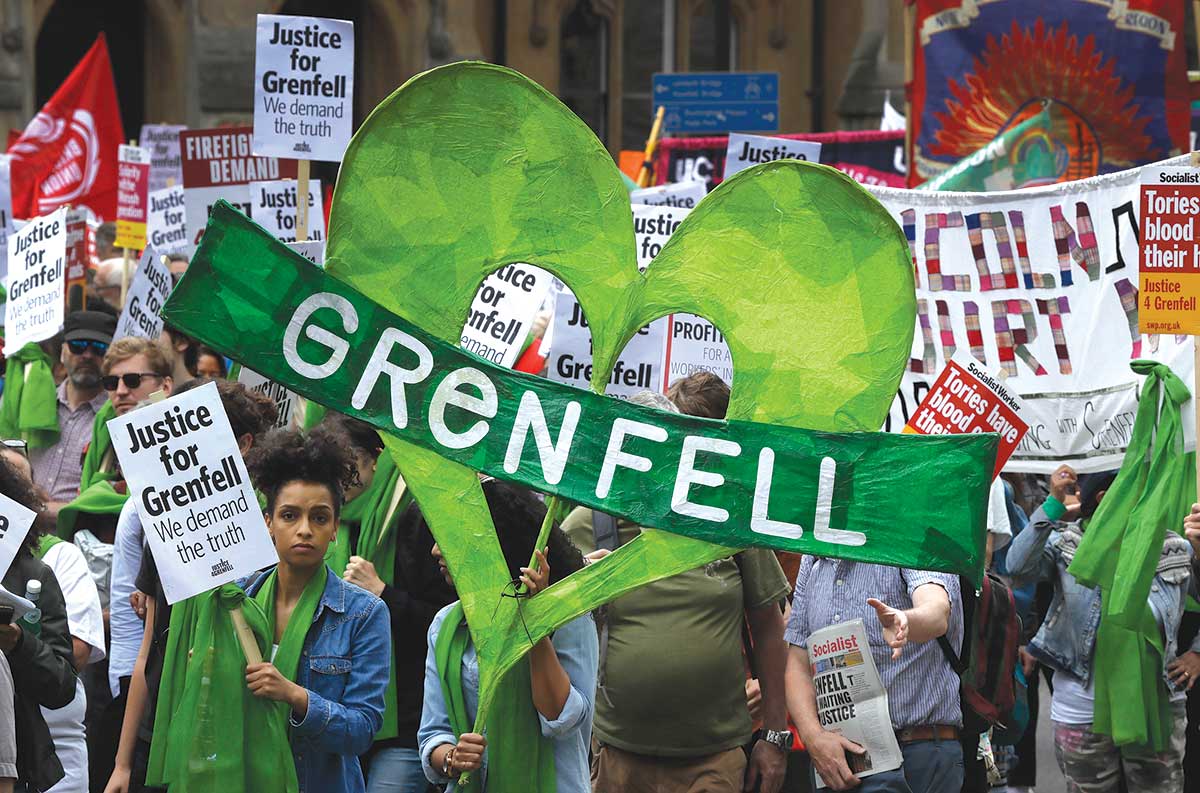
I think that’s one of the things that will surprise an American audience. Half a million people live in New York City Housing Authority apartments. But a lot of them were built in the 1940s and ’50s by Robert Moses, who was the construction coordinator of the City of New York and who didn’t believe, for example, that poor people should have doors on their closets.
[From the end of World War II to the late 1970s] in Britain, there was a feeling that people had a right to have a proper house. I mean, now it is very different, because it is so hard to get any kind of social housing, because there are not enough houses, so that it’s only the worst-off and the poorest and the most in need who actually qualify. But at that time, good housing was considered a right for all working people—not just for the rich.
Was that partly because the Blitz had bombed out a lot of housing?
And after the war, the government promised “homes for heroes.” People were very proud of their council houses. It was considered your right as a working person to get a house. Grenfell was a very well-made concrete building which would never have caught fire if they hadn’t clad it.
With plastic.
Yeah.
One of the things that emerges in the play is that in addition to this very diverse community of immigrants and next-generation people, you have some people who are obviously middle-class, who have lived there quite a while, because although you had to have a certain low income level to get housing, they don’t monitor your income and throw you out if it should rise.
It was a group of people—working people of London, so incredibly diverse. I shouldn’t make it too rosy. There were people who were overcrowded. For example, one of them in the play, he and his family had come from Syria, and there were five of them in a one-bedroom flat. But that’s quite unusual. Most of the people that I talked to had light and space and a good standard of living.
When did the play begin to happen?
The fire happened in 2017. We starting working on the play about six months afterwards.
Six months?
I went to the National saying, “This is about what’s happened in our society. You really need to put something on.” It’s the National Theatre—it’s meant to embrace the state of the nation. But I knew this could not be an ordinary drama, that it had to have the voices of the residents and bereaved, partly because the story belonged to them, and because the tragedy happened because they were never listened to in the first place. So we had to talk directly to them, and what followed was a long process of gaining people’s trust.
I say to people, “I’m taking this interview. I will transcribe it and I will send it back to you, and then anything that you don’t want on a public stage, take it out, and I guarantee I won’t use it.” After having made the first draft of the play, we invited the people who were in it—in the tower —to come and watch it. We did a reading just for them.
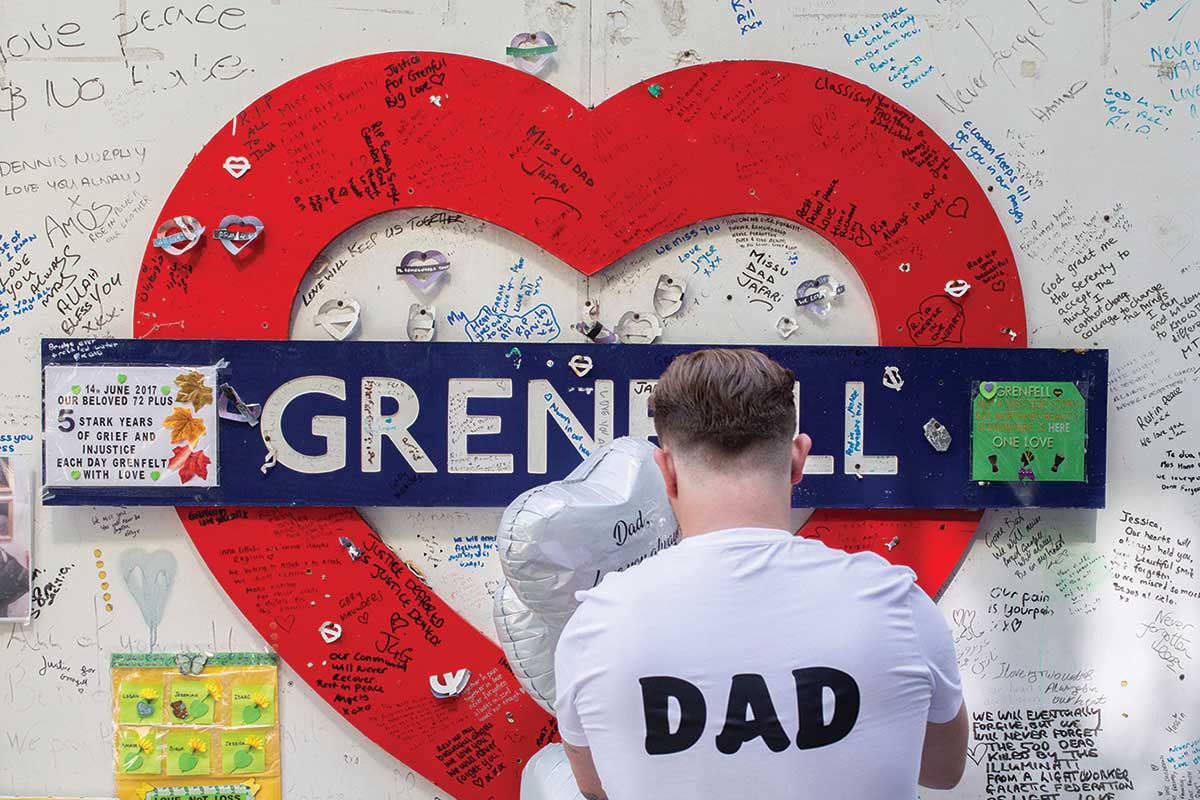
What changed after that?
Quite a lot changed from that reading. They wanted certain things about their activism more pronounced. Sometimes they felt that I’d been too kind to some of the authorities. I’m not sure I changed that, because they’re a very generous group of people, and they weren’t there to censor what I did. Some of the time, they suggested I talk to other people. Some of what changed is, I interviewed more people after that, because once they knew what it was, it was easier to get to talk to other people, since they would hear, “We’ve seen it and it’s OK.” We worked very closely with them from the very beginning and continue to work with them. For example, some of them will be coming to New York. They’re a very wonderful group of people. If you talk to them about who should come to New York and say to them, “What happens if more people want to come than we have money for?,” they say, “You put the names in the hat and you take them out, and we will accept that.” I mean, they have a way of organizing that is truly democratic.
Do you think about how much will have to be explained for an American audience, or are you just going to throw us into the deep end?
I think we’re going to have somebody read it, especially in America, just to highlight to me what isn’t understandable. And because the production also used , we have the capacity to explain stuff that we think an American audience won’t know. Everybody in Britain knows what “Grenfell” means, but they don’t—
Nobody in New York knows it.
Right, so we have to find a way of transmitting to them what it means.
When I went to see the play, I thought it might be worthy and earnest, and I thought it might be a little dull, and it wasn’t. How did you do that?
Because it is actually really interesting. I have been well trained by writing crime, because I had to learn how to make a plot work. I sit with the interviews and I can see what works together, and I can see what builds into a story. And the whole escape from the tower is gripping.
It’s dramatic.
The capacity of human beings to rise to such a terrible moment is thrilling. I’m thinking in particular of one woman who left from the 18th floor at a late time, pregnant, with three children, and got out of there. When I interviewed her, my heart was in my mouth, thumping, because of how difficult that must have been—but how amazing she is to talk about it with such honesty and such generosity. She was the most badly injured of the Grenfell people who survived, because if you were badly injured in that fire, you were dead. She’d had a towel over her mouth, as they told her to have when they told her to get out, but she was also holding onto two of her children and carrying the third child, and when her towel slipped, she didn’t pick it up, because she thought she might lose a child, so her throat was badly burnt. But the dignity with which she talked had me in awe. There’s another woman in the play whose evidence I partly took from the inquiry because she could not bear [to talk about] it. She lost a lot of members of her family, and [after] she got out of the tower, she was ringing them up. She knew that they were still there, and she was talking to them on the phone. And this woman says that one of the most difficult things that she has to live with was that she lied to her nephew that it was going to be all right, when she knew, standing outside, that it was not going to be all right—but she lied to keep him calm, and she feels the guilt of that.
And I just think it’s extraordinary to have gone through this and to end up feeling this guilt when the authorities apparently feel absolutely no guilt for the fact that this happened on their watch and through their carelessness.
Hold the powerful to account by supporting The Nation
The chaos and cruelty of the Trump administration reaches new lows each week.
Trump’s catastrophic “Liberation Day” has wreaked havoc on the world economy and set up yet another constitutional crisis at home. Plainclothes officers continue to abduct university students off the streets. So-called “enemy aliens” are flown abroad to a mega prison against the orders of the courts. And Signalgate promises to be the first of many incompetence scandals that expose the brutal violence at the core of the American empire.
At a time when elite universities, powerful law firms, and influential media outlets are capitulating to Trump’s intimidation, The Nation is more determined than ever before to hold the powerful to account.
In just the last month, we’ve published reporting on how Trump outsources his mass deportation agenda to other countries, exposed the administration’s appeal to obscure laws to carry out its repressive agenda, and amplified the voices of brave student activists targeted by universities.
We also continue to tell the stories of those who fight back against Trump and Musk, whether on the streets in growing protest movements, in town halls across the country, or in critical state elections—like Wisconsin’s recent state Supreme Court race—that provide a model for resisting Trumpism and prove that Musk can’t buy our democracy.
This is the journalism that matters in 2025. But we can’t do this without you. As a reader-supported publication, we rely on the support of generous donors. Please, help make our essential independent journalism possible with a donation today.
In solidarity,
The Editors
The Nation

